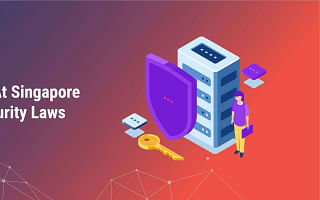Rhett Rowe is a seasoned expert in cybersecurity, boasting over 15 years of professional experience in the industry. He has collaborated with numerous Fortune 500 companies, aiding them in fortifying their digital infrastructures. Rhett is a Certified Ethical Hacker (CEH) and has earned his Master's degree in Information Security from Stanford University.
Hey there!
When it comes to cybersecurity, detecting and mitigating cyber threats is crucial to keeping your digital world secure. In this ever-evolving landscape, it's important to stay one step ahead of potential attackers. So, let's dive into some effective techniques to detect and mitigate cyber threats.
1. Stay Updated: Cyber threats are constantly evolving, so it's essential to stay up-to-date with the latest cybersecurity updates. Regularly check for software updates, security patches, and firmware upgrades for your devices and applications. These updates often include fixes for known vulnerabilities, making it harder for attackers to exploit them.
2. Implement Network Security Solutions: Network security solutions are your first line of defense against cyber threats. Firewalls, intrusion detection systems (IDS), and intrusion prevention systems (IPS) help monitor and control network traffic, identifying and blocking suspicious activities. Additionally, virtual private networks (VPNs) encrypt your internet traffic, ensuring secure communication.
3. Conduct Penetration Testing: Penetration testing, also known as ethical hacking, is a proactive approach to identify vulnerabilities in your systems. By simulating real-world attacks, you can uncover weaknesses before malicious actors exploit them. Regularly conducting penetration tests helps you identify and fix vulnerabilities, strengthening your overall security posture.
4. Utilize AI Cyber Detection: Artificial intelligence (AI) plays a significant role in cybersecurity. AI-powered systems can analyze vast amounts of data, detect anomalies, and identify potential threats in real-time. By leveraging AI cyber detection tools, you can enhance your threat detection capabilities and respond swiftly to emerging threats.
5. Implement Threat Detection and Response Solutions: Threat detection and response solutions, such as AT&T Threat Detection and Response, provide comprehensive monitoring and analysis of your network. These solutions use advanced analytics and machine learning algorithms to detect and respond to cyber threats effectively. They help you identify suspicious activities, investigate incidents, and take immediate action to mitigate potential damage.
Key Features of Threat Detection and Response Solutions
| Feature | Description | Example | Benefit |
|---|---|---|---|
| Advanced Analytics | Uses statistical techniques to analyze data and identify patterns. | AT&T Threat Detection and Response's analytics can identify unusual network traffic that may indicate a cyber attack. | Helps in early detection of threats, reducing potential damage. |
| Machine Learning Algorithms | Uses algorithms that improve automatically through experience. | AT&T Threat Detection and Response's algorithms learn from past incidents to improve future threat detection. | Improves accuracy and speed of threat detection over time. |
| Incident Investigation | Provides tools for investigating detected threats. | AT&T Threat Detection and Response provides detailed reports on detected threats, including their source and potential impact. | Helps in understanding the nature of the threat and planning an effective response. |
| Immediate Action | Allows for immediate response to detected threats. | AT&T Threat Detection and Response can automatically block suspicious network traffic. | Minimizes the time between threat detection and response, reducing potential damage. |
6. Train Employees: Your employees are your first line of defense. Educate them about cybersecurity best practices, such as recognizing phishing emails, creating strong passwords, and avoiding suspicious websites. Regular training sessions and awareness campaigns can significantly reduce the risk of successful cyber attacks.
7. Monitor and Analyze Logs: Monitoring and analyzing logs from your network devices, applications, and systems can provide valuable insights into potential threats. By reviewing logs regularly, you can detect unusual activities, identify patterns, and take appropriate actions to mitigate cyber threats.
8. Implement Multi-Factor Authentication (MFA): Multi-factor authentication adds an extra layer of security to your accounts. By requiring users to provide multiple pieces of evidence to prove their identity, such as a password and a unique code sent to their mobile device, MFA significantly reduces the risk of unauthorized access.
Conclusion: Detecting and mitigating cyber threats is an ongoing process that requires a proactive approach. By staying updated, implementing network security solutions, conducting penetration testing, utilizing AI cyber detection, implementing threat detection and response solutions, training employees, monitoring and analyzing logs, and implementing multi-factor authentication, you can significantly enhance your cybersecurity defenses. Remember, cybersecurity is a collective effort, and staying vigilant is key to keeping your digital world secure.
Stay safe and secure in the digital realm!
Ethan Cipher















